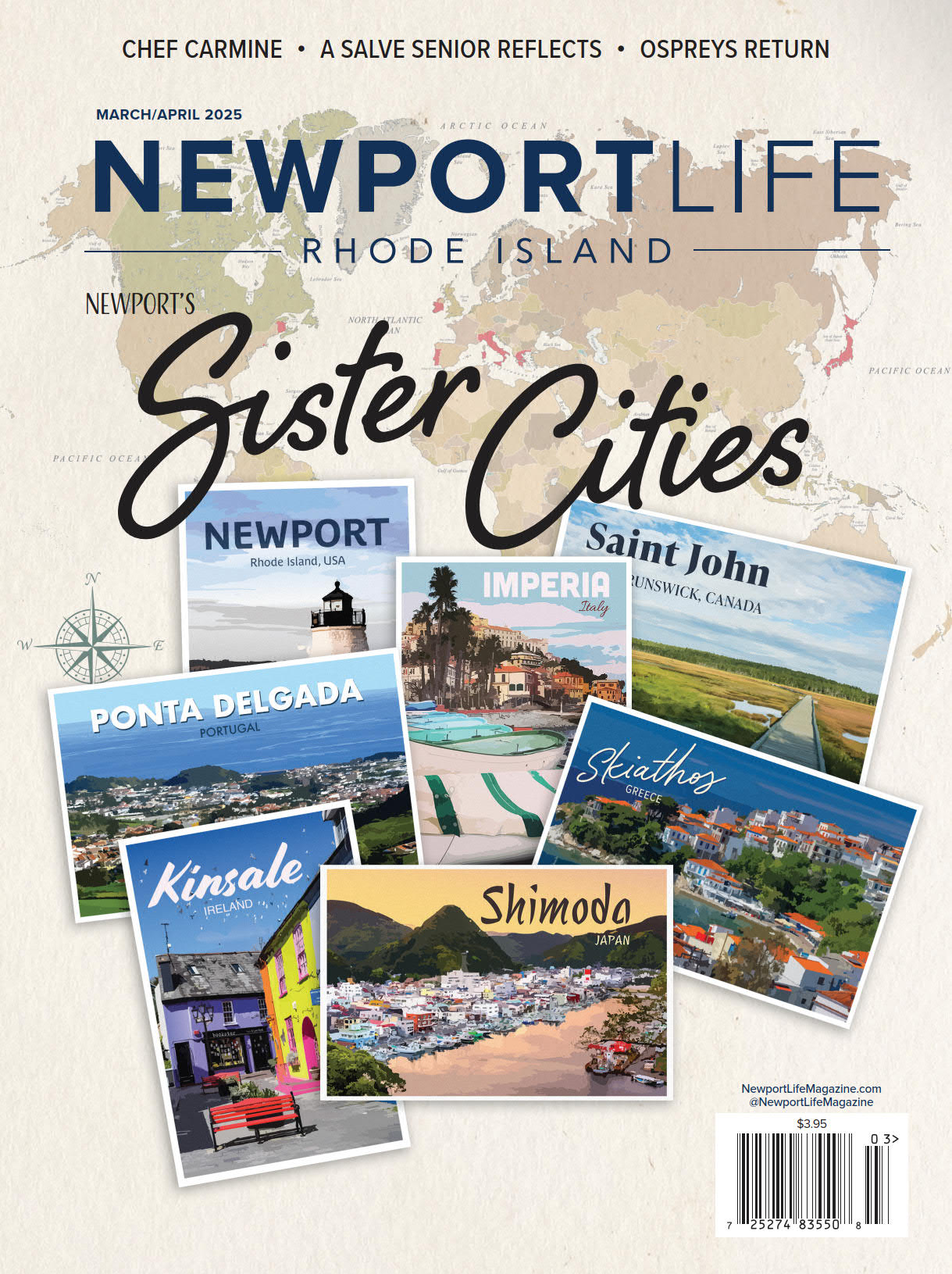Seasonal Workers: An Essential Exchange
By Andrea E. McHugh
From the Caribbean to Ireland, the Balkans & beyond, workers on J-1 and H-2B visas settle in Newport for the summer season
Photos by Francesca Dolnier
The aromatic spiciness of jerk chicken fills the kitchen at The Landing in Newport, where Godfrey Steele prepares the dish similarly to how he does in his native Jamaica. He and wife Latoya Johnson Steele are familiar faces at The Landing and at The Lobster Bar next door, where for years, they’ve filled critical roles contributing to the success of the popular restaurants at the end of historic Bowen’s Wharf. “It’s our home away from home,” says Godfrey with a warm smile.
The Steeles return to Newport from their Jamaican homeland each year from April through October via the H-2B nonimmigrant program, one of many visa programs that allow foreign workers to come to the U.S. and help fill jobs, many in the hospitality sector, at a time when the city’s population swells by the
tens of thousands.
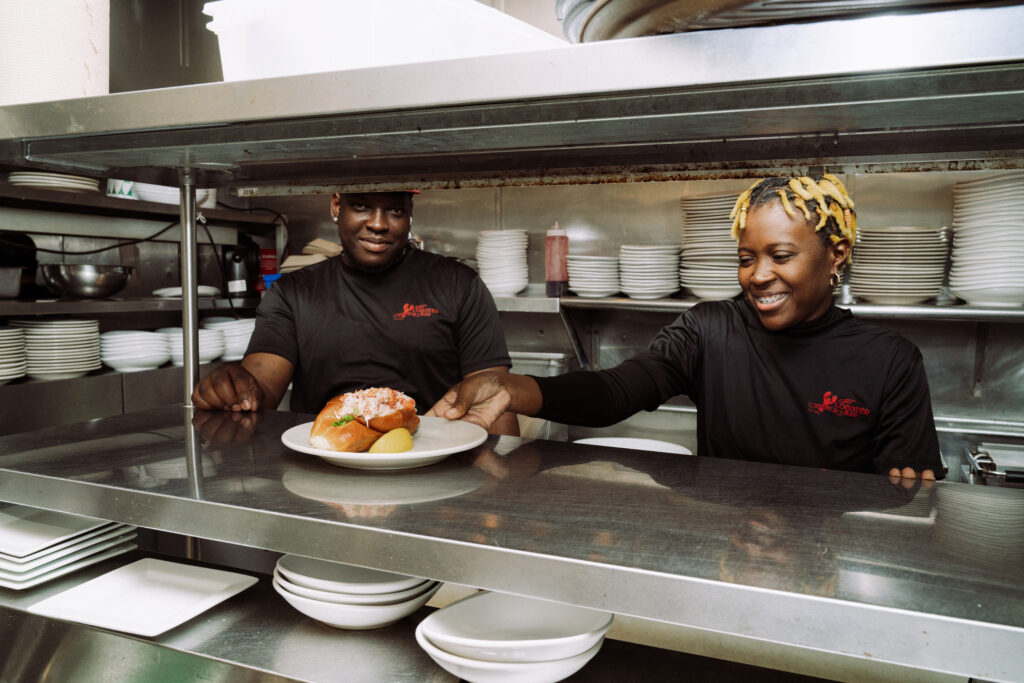
Though more than 1,600 miles apart, the two destinations share some culinary similarities that allow Steele to showcase flavor profiles in each. “I’m able to learn some of what they do here and bring it back home, and some of what I do at home, I try to infuse when I get here,” he says.
Many seasonal workers in Newport, like Steele, have H-2B visas or J-1 visas, different classifications based on specific qualifications but both types of temporary work visas. The J-1 exchange classification was instituted in 1961 under the Mutual Educational and Cultural Exchange Act, commonly referred to as the Fulbright-Hays Act, created to encourage cultural and educational exchange between the U.S. and other countries.
In the late 1960s, Newport broke ground on an urban renewal project, greatly motivated by suspicions that the U.S. Navy would pull its Atlantic destroyer fleet out of the city — suspicions that proved true when President Richard Nixon famously and abruptly announced he was doing just that in April of 1973. The Claiborne Pell/Newport Bridge spanning the East Passage of Narragansett Bay opened on June 28, 1969, and the construction of America’s Cup Avenue that same year ushered travelers into downtown, and the tourist economy was invigorated.
Of course, hospitality has been the blood running through Newport’s veins for centuries; first as a colonial seaport where genteel families from the South would escape the summer heat below the Mason-Dixon Line, and later during the Gilded Age, when America’s most lauded titans of industry built their “summer cottages” hugging the jagged coastline to embrace the cool, salty breeze.
But the modern revitalization introduced resort hotels including the Sheraton Islander Inn & Conference Center on Goat Island in 1969 (today’s Newport Harbor Island Resort), the Treadway Inn in 1971 (today’s Newport Harbor Hotel & Marina) and the Newport Marriott in 1985. Notably, The Hotel Viking preceded Newport’s tourism revival, opening its doors in 1926.
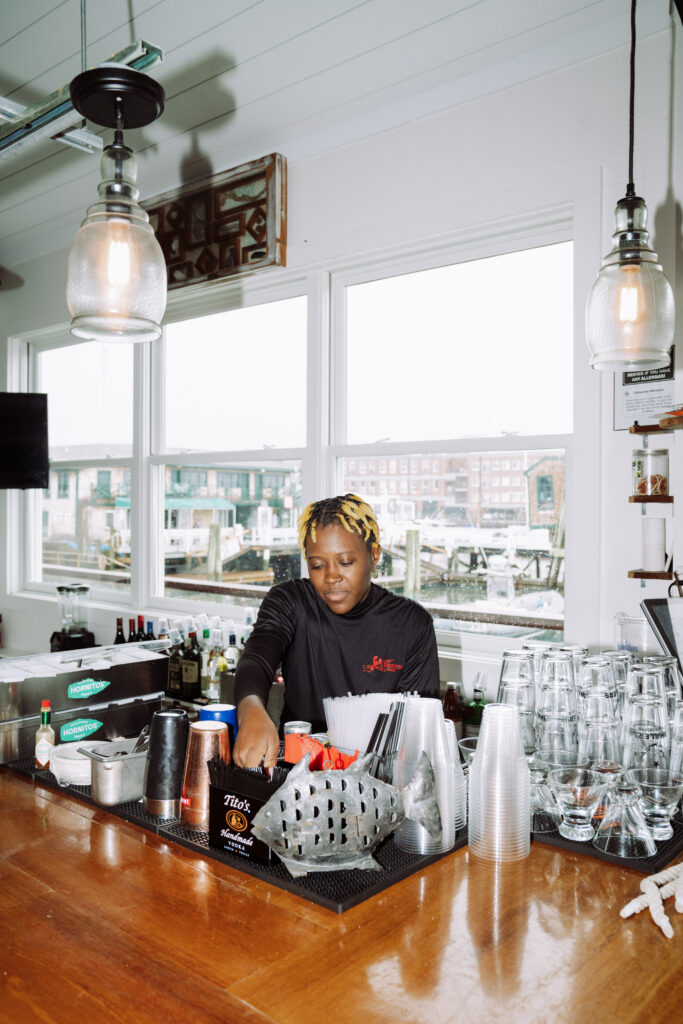
Events including the Newport Jazz Festival and Newport Folk Festival continued to grow, swelling the summer population by the thousands, and the contentious 1983 America’s Cup sailboat race series was broadcast around the world, giving Newport international acclaim — despite the U.S. team’s infamous loss.
As tourism and hospitality thrived in the City-by-the-Sea, so did the demand for seasonal workers. Evan Smith, Discover Newport’s president and CEO, says in the 1970s and 1980s, college students typically secured summer jobs in Newport months before the season started. These days, he acknowledges, many local businesses face staffing challenges, an issue exacerbated by the COVID-19 pandemic which hit the hospitality industry worldwide particularly hard.
In June of 2020, the Trump Administration issued a presidential proclamation instituting a nonimmigrant visa ban that suspended the entry of foreign nationals in multiple categories, including the J-1, but the Biden Administration allowed the ban to expire in April 2021. As the tourism industry recovered, workers on J-1 and similar visas returned and aided in the rebuilding process.
“We went from zero to 100 pretty fast, and so the need was there again,” says Smith. Though many businesses and programs that connected J-1 individuals with employment and housing closed or were recovering, Smith says many local restaurants, hotels, private clubs and other businesses put in requests for workers.
In 2022, the J-1 Summer Work Travel program brought 1,332 visa holders to Rhode Island, according to BridgeUSA, a program within the Bureau of Educational and Cultural Affairs of the U.S. Department of State. (In total, the program averages around 300,000 foreign visitors to the U.S. from 200 countries and
territories per year.) Many of Rhode Island’s J-1 visa holders make their seasonal home in Newport and quickly become an essential part of its now thriving hospitality industry.
* * *
McGrath Clambakes & Catering has hired J-1 students for about 10 years. The company specializes in authentic old fashioned New England clambakes as well as traditional catering services for events that can have hundreds of guests requiring a robust staff to tend to their needs.
Melissa McGrath, event manager, says the company employs anywhere from 20-80 people on any given weekend depending on what events are scheduled and what type of service is required.
“We do find it difficult to fully staff some of our events without the help of J-1 students,” says McGrath. “As a catering company, our schedule varies week to week, and we do not have a regular set schedule. Therefore, it helps to have staff on board that is hired to work with us exclusively.”
She adds that many local employees are students and teachers, but they can only be available until the school year resumes. “The shoulder season can be challenging to staff, so having the J-1 students to offset our existing staff’s availability is super helpful,” she adds.
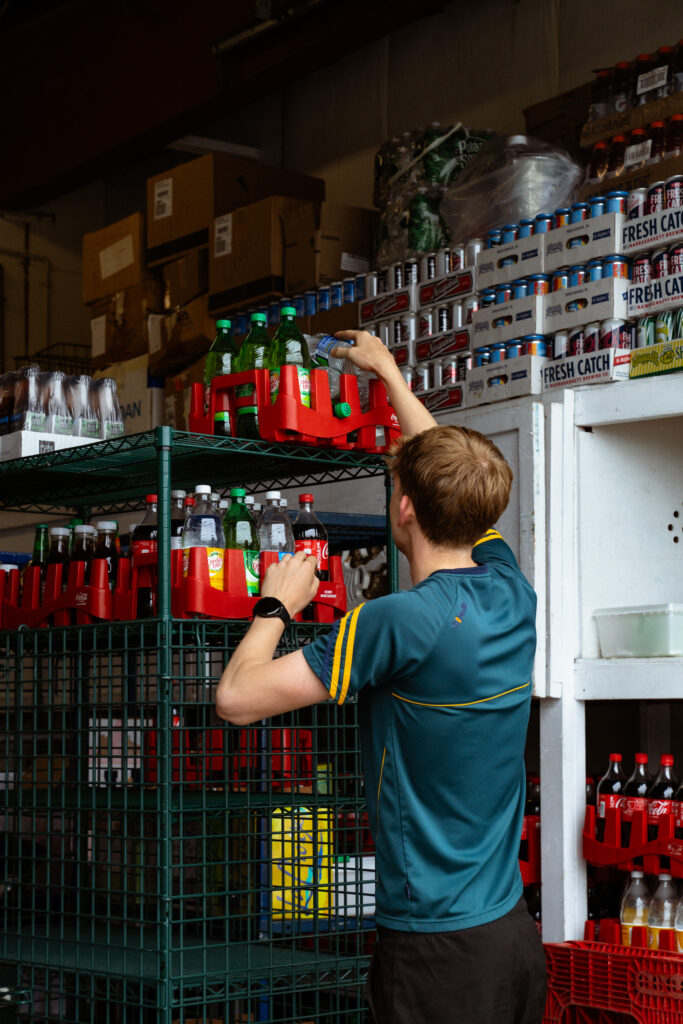
Most of the company’s J-1 students come from Ireland and Poland; McGrath says the company has had a number of students return for a second season. “We’ve also had a couple students come back on their own to work with us,” she adds.
For two decades and counting, La Forge Casino Restaurant on Bellevue Avenue has also employed dozens of Irish workers on J-1 visas each summer, some returning to work as interns or managers. This year, ten Irish students are among the restaurant staff, working as servers, hosts, and table runners.
“We become really close, like family,” says Ashley Lemire, former director of food and beverage operations, who worked at La Forge for 18 years. “We often stay in touch after they leave.”
Likewise, for Christina and Luca Mignogna, owners of Mozz, located just across from La Forge in the Bellevue plaza, hiring an international student on a J-1 visa proved invaluable as their artisan cheese and Italian imports shop on Bellevue Avenue is modeled around an authentic Italian experience.
“When we first opened in 2022, we were fortunate to employ a J-1 student from Croatia as her second employer,” says Christina, “and she was really essential to us because she had worked an Italian bar in Zagreb, Croatia, the capital, so she already understood what we were trying to create better than Americans could understand because our concept is Italian.”
A meaningful friendship blossomed from there, as Christina would take the student to different places and sites around Newport, and the two stayed in touch once she returned to Croatia.
“Last summer, she came and spent the weekend with us, and we went to the mansions and did a lot of fun Newport things together that she never got to experience when she was here — and it was nice to not be working,” Christina adds.
“So yes, we were very grateful for her time and her friendship. For a business like ours that is European in concept, it becomes a lot easier to employ J-1 students because they understand that concept, and most of them always say that they come and try to work with us because it reminds them of home, which is really nice,” she notes.
* * *
Apart from being an extraordinary seaside city chock full of history, popular restaurants and world-class events, Newport is attractive to a good number of students because it’s easy to get around.
The “Hop-On Hop-Off ” bus service on Route 67 and Route 68 is free for locals and visitors alike. It services popular tourist destinations including the Newport Mansions, Cliff Walk, the Audrain Automobile Museum, International Tennis Hall of Fame (67) and more, including Reject’s Beach, and connects neighborhoods in the North End of Newport to First Beach (68).
Bike Newport offers bikes to J-1 students for the season, providing another option for getting around.
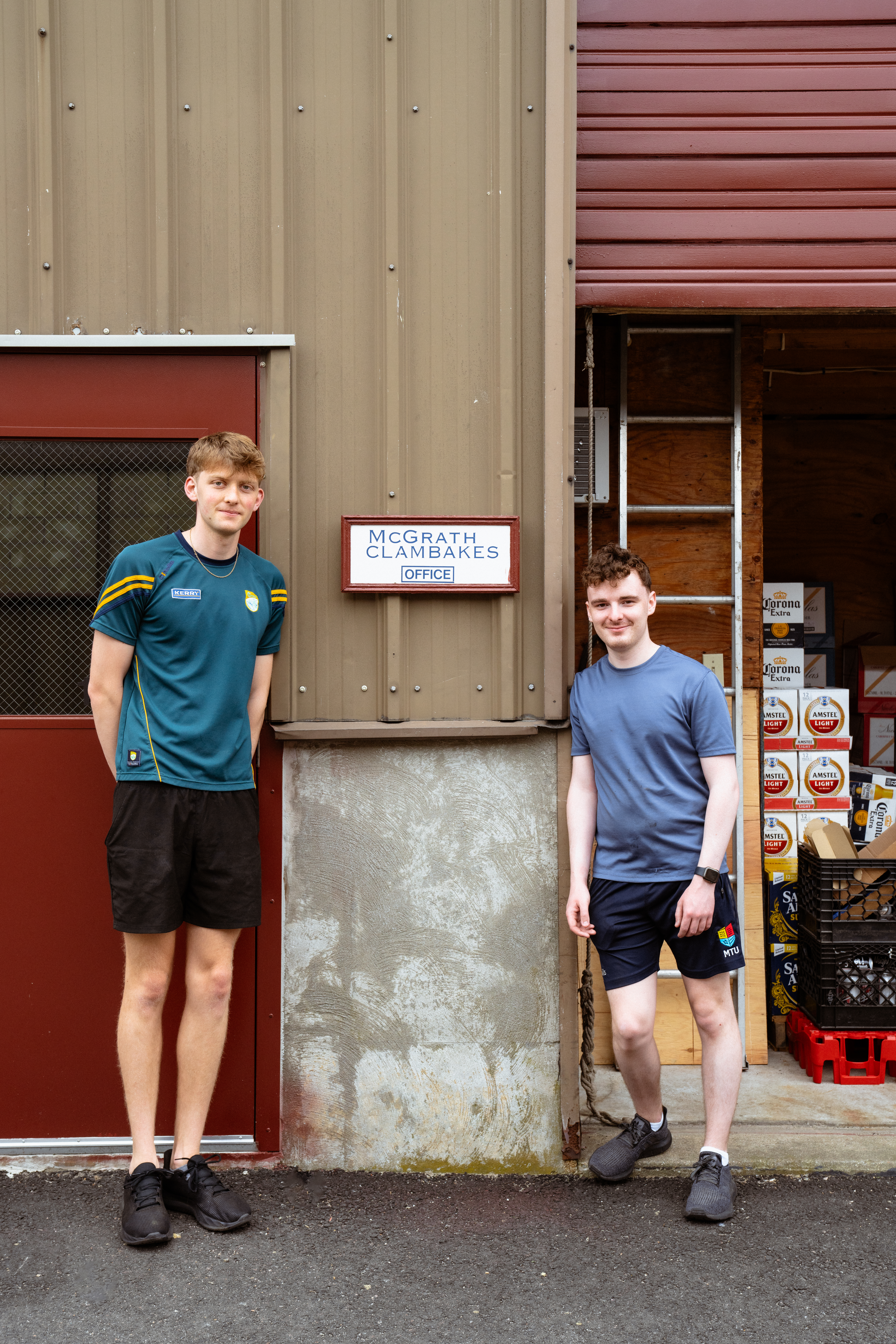
“Bike Newport is the first stop for many [J-1 students] on arrival,” says Bari Freeman, the organization’s executive director. “Bikes provide dependable transportation for the whole summer. [Students] provide a deposit and get most of it back when they return the bikes at the end of the season, so it’s very affordable and we keep the bikes in circulation. Win-win.”
Freeman says students typically learn about the loaner bike program through word-of-mouth or through their employers. Moreover, bicycling is the major mode of transportation in many European cities, so seeking out a bike in their temporary home just makes sense.
Unequivocally, the biggest challenge facing J-1 students in Newport today is housing.
In a widely published report by real estate marketplace Pacaso, Newport County ranked No. 1 in luxury second home transactions in 2023. As of April this year, the median listing home price in Newport was $1.8 million, trending up 69.5% year-over-year (Realtor.com). Many homes and apartments that were once seasonal rentals have become short-term rentals at sky-high rates, greatly reducing inventory for J-1 students in what is already a highly competitive market.
In a Facebook group for Newport-bound J-1 students, the predominant theme is housing. Months in advance of their arrival, students from Ireland, Montenegro, Romania, Russia, Bosnia and Herzegovina, Kazakhstan, and Croatia all posted about looking for places to live with roommates or for shared housing.
Evan Smith at Discover Newport concedes the rise of short-term rentals, like Airbnb, is a major factor making finding accommodations for seasonal workers, both foreign and domestic, challenging. “Workforce housing is a major issue,” he says. “Just about every one of our hotels has taken rooms offline and are putting employees in their rooms. They range anywhere from five or six rooms up to 10 to 15 rooms. People are getting super creative with how they are starting to house folks.”
Restaurateur and businessman Patrick “PK” Kilroy knows all too well how daunting it is for not just J-1 students, but for any of his employees to find affordable housing.
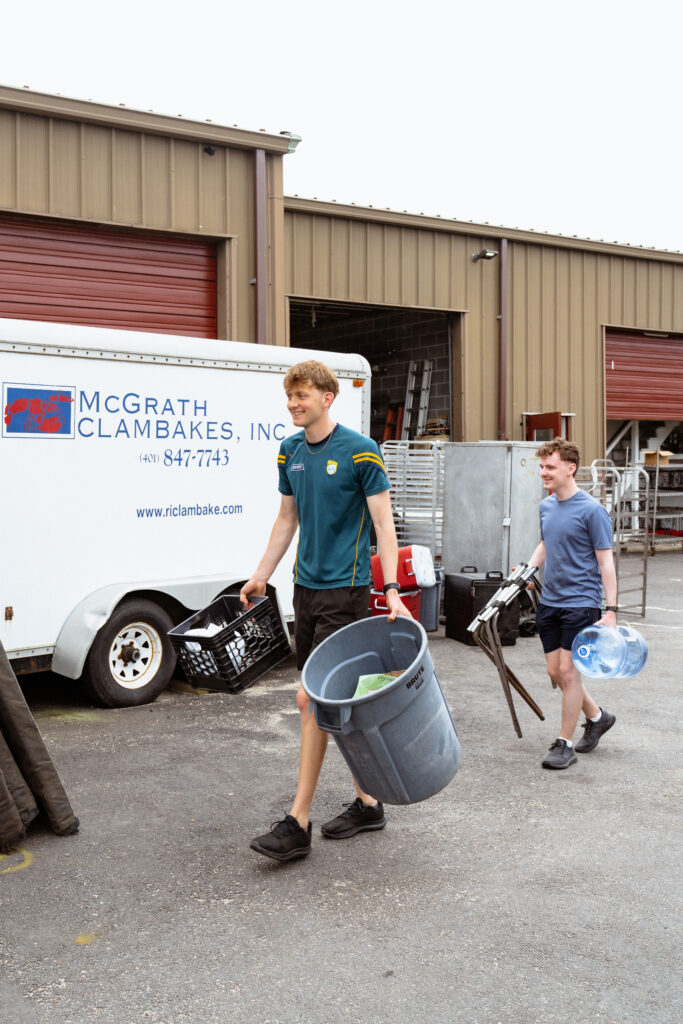
“It’s been a huge struggle and it’s not going to get any better,” says Kilroy. “I think every year is getting worse and worse.” As the owner or co-owner of The Landing, The Lobster Bar, Midtown Oyster Bar, Surf Club, and Zelda’s, Kilroy is one of the largest employers amongst Newport restaurants. With so many in
need, Kilroy took matters into his own hands.
“Staff housing is so few and far between you can’t find it anywhere, so I’ve personally gone out and purchased three properties for staff housing, and I currently house about 30 of my employees,” he says; half of those are seasonal workers, Godfrey and Latoya among them.
“I personally don’t see any way around it. I know a couple other restaurants in town that have staff housing as well. For some of these smaller restaurants I just don’t know how they’re going to survive. You can’t open if you don’t have staff,” he says.
Affordable housing for seasonal workers, cultural-exchange students, and others isn’t a problem unique to Newport. Popular summer destinations nationwide are struggling with the disparity. While the real estate market remains robust and long-term rentals transition to short-term rentals, the housing shortage crisis will continue to impact both permanent residents and businesses throughout Newport that rely on
temporary seasonal workers to stay in business and deliver positive experiences throughout the hospitality sector.
What is known, as has been proven over nearly four centuries, is that the people from around the world who come to Newport to work are a vital spoke in the cog of industry here. Adds Smith, “I’m not sure there’s another city of 25,000 people who has such an international profile that Newport does.”
